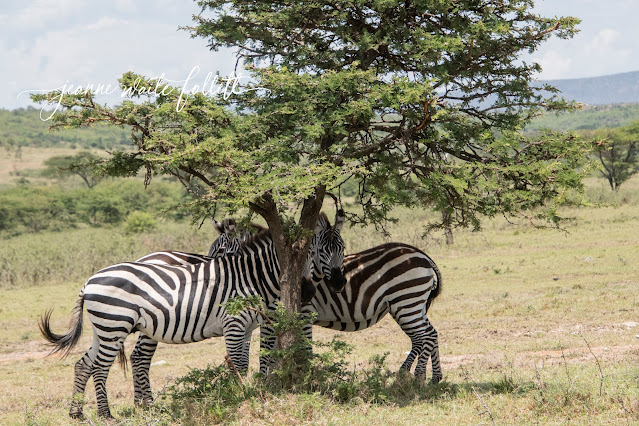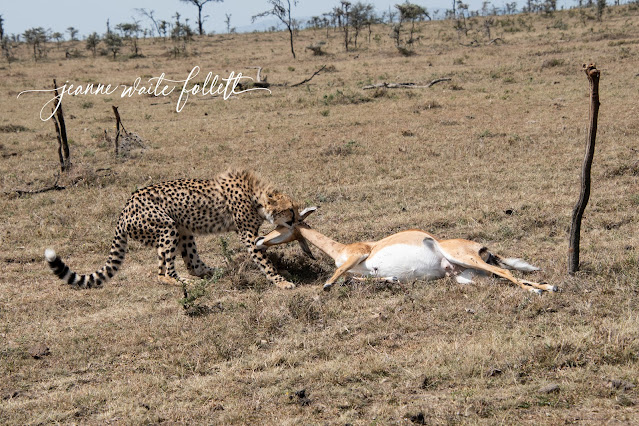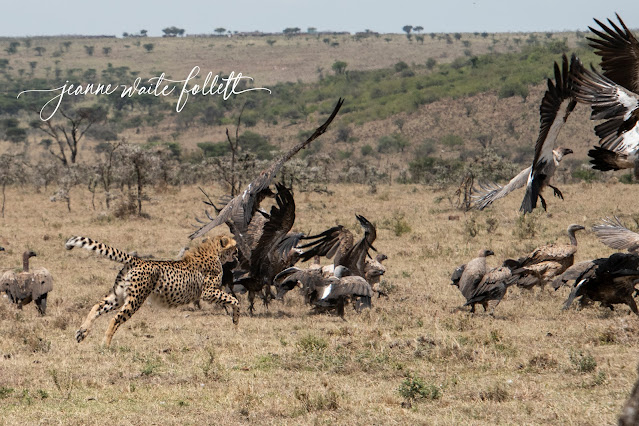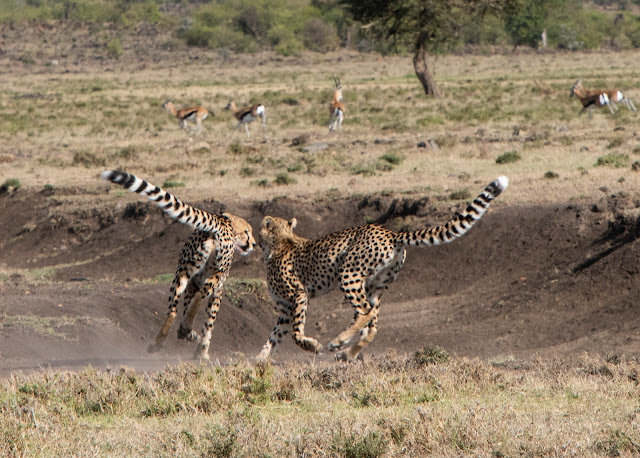Chapter 34:
In Which We See a Wake
Vultures are the most righteous of birds:
they do not attack even the smallest living creature.
-- Plutarch

And two, there are some graphic photos in this post.
Postprandial to breakfast in the field, our driver rushes us to the site of a cheetah kill. When we arrive, the mum cheetah has just relinquished her suffocating hold on the neck of a pregnant impala. Her two cubs have joined her.
The cubs inspect the impala while the mother catches her breath, after which she moves about two hundred feet to the shade of a tree.

And tries....
And tries from the other end....
But the second cub was more interested in dining. Cheetahs prefer only fresh, non-fatty meat. They will not return to a carcass once it's been deserted and they do not scavenge.
Mum waits in the shade of a tree. It will take her about a half hour to recover from her exertions.
Then the vultures, the primary part of the clean-up crew, begin to arrive. We watch and hope no hyenas know of the kill, as they will steal it from the cheetahs. Cheetahs fight to defend their cubs as much as they can, but the bite of a hyena can crush bones.
Marabou storks fly in, also members of clean-up crews.
Their numbers increase steadily while the cheetahs eat.
WARNING: TWO GRAPHIC IMAGES AHEAD
The mother cheetah removes the impala fetus from the carcass and carries it to the shade.
The storks and vultures hold back while the cheetahs are on the carcass, but as soon as all the cats move away, they descend.
This photo depicts a "wake" of vultures, the collective noun for a number of vultures eating.
 |
| I have often wondered how the storks keep from having a leg bitten off by a vulture when they are deep in a scrum like this. |
Then, the birds turn their attention to the cheetahs in the shade that are devouring the fetus. I found this to be an intimidating sight, all those razor-shape bills approaching the cheetahs.
Cheetahs, always alert to danger, keep an eye on the approaching birds.
One cub ventures out, whether to have some fun or to chase away the birds, I can't say.
Mum cheetah is the only one left at the remaining carcass.
As soon as she walks away, the mob descends.
 |
| A Marabou stork scores some bones. |
We head back to camp for lunch and a mid-day break while the sun is at its peak and the light is too for photography.
On the way, we see cattle from one of the local herders at the smelly creek. Naboisho Conservancy is privately held land herders have the right to graze their herds on it, unless the Maasai Mara. There is a debate as to whether their herds over-graze to the detriment of wild grazers. We saw a number of herders with their herds here.
 |
| This water has a strong sulfer smell. |
Just below camp, three zebra try to find shade under a small tree.
 |
| You need a bigger tree. |
After lunch, I'm working at my desk, downloading photos onto an external hard drive, when I notice movement outside. Carefully, slowly, I grab my camera and take a photo through the tent screen.
It's a rock hyrax, colloquially known as a dassie. Weighing only four to 12 pounds, these little creatures are not rodents. Instead, I present this explanation copied from the Internet:
I finally figured there were several dassies living under my tent deck, some shy, some not so shy. This one waited while I unzipped the tent fly, climbed down the rocks and walked to where it was sitting under a bush.
When that fun was over, I ate some more of the Hallowe'en candy Laura had brought for all of us.
Next: Giraffes, baboons, and birds.






































.JPG)
























